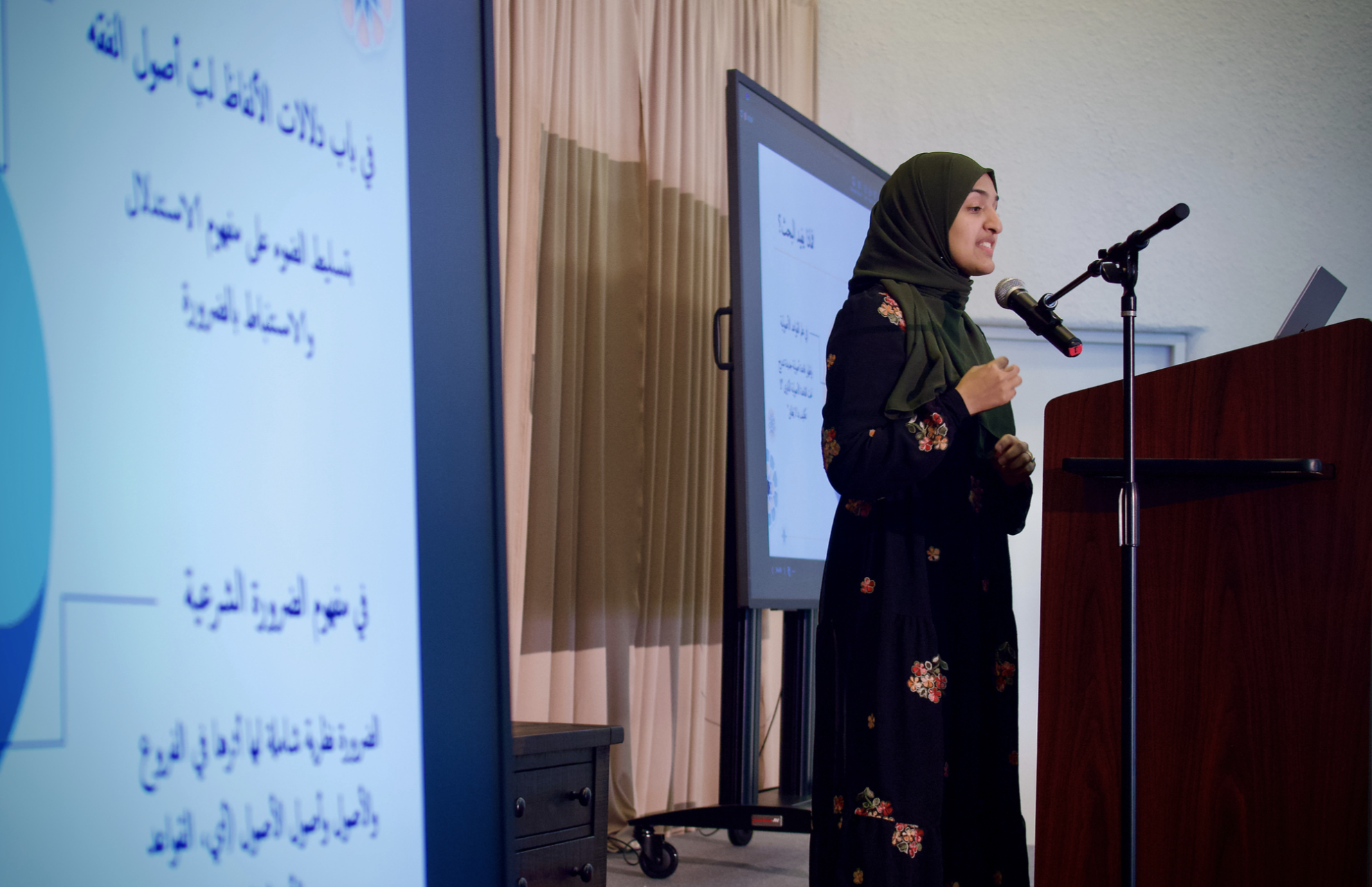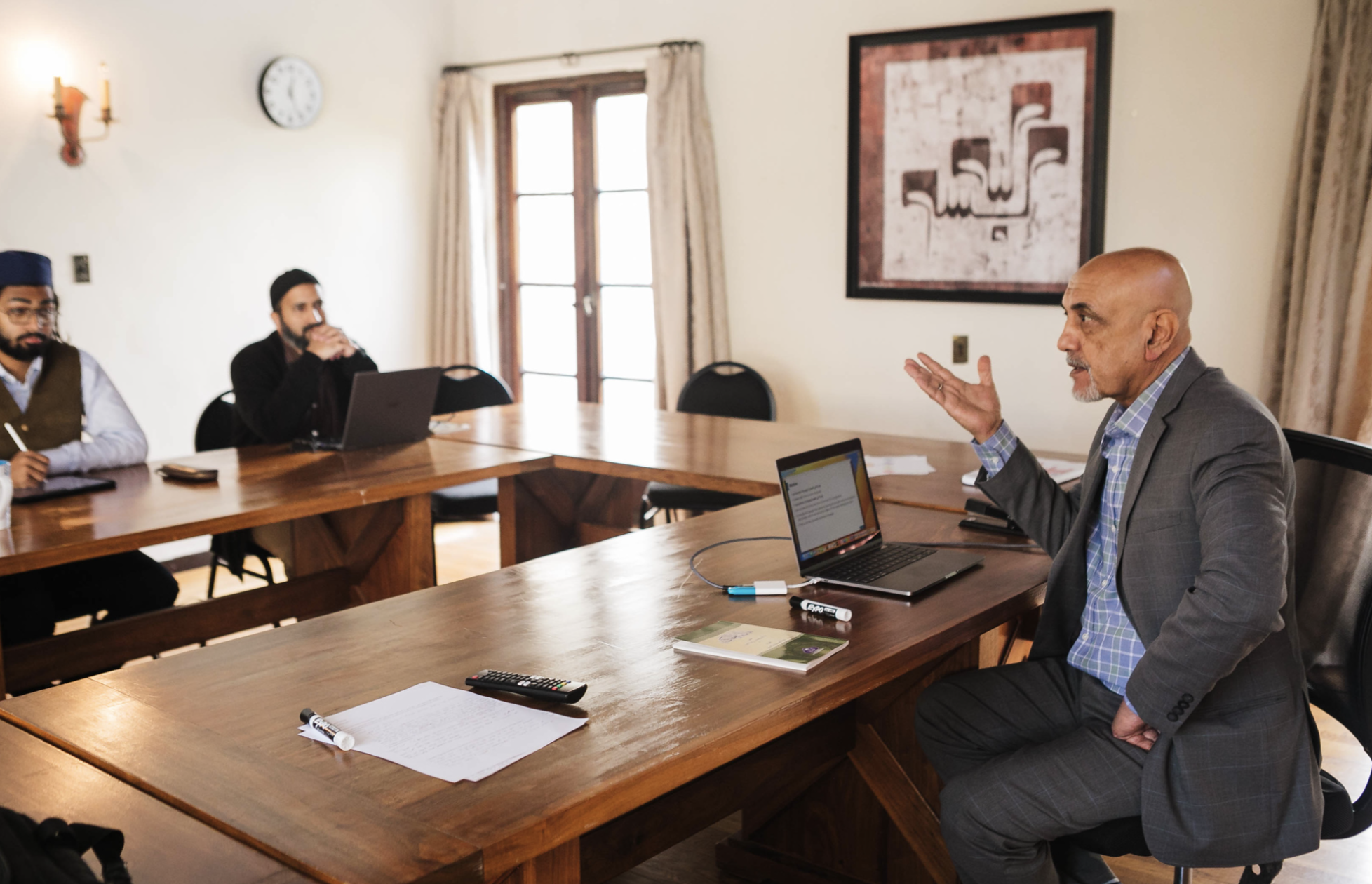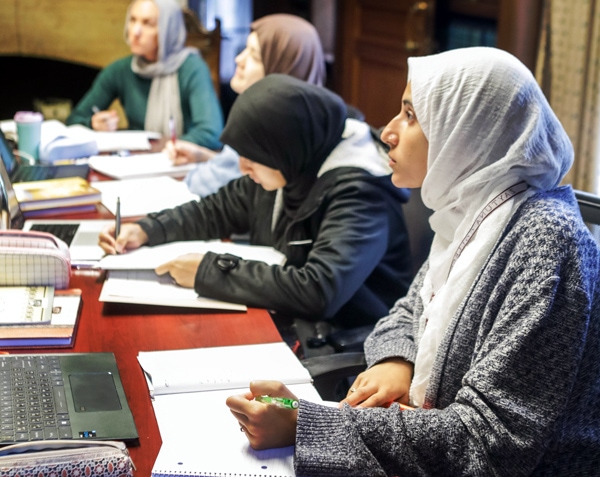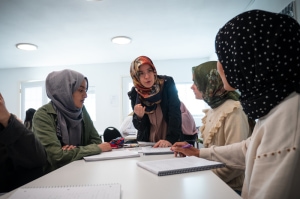Master of Arts Degree
Master’s Degree in Islamic Texts
The Master of Arts Degree in Islamic Texts offers a distinctive educational experience, equipping students with the essential skills required for conducting authentic research within the rich corpus of Muslim primary texts. Students are trained in the skills necessary to conduct original research in the primary texts of the Muslim tradition. They come to understand these subjects, within their own context, rather than having to rely upon secondary sources and translations. With the guidance of faculty members who are trained classically in each of these subjects, the student is able to enter an intellectual discourse that spans centuries.
The MA degree is a two-year program that culminates in a summative thesis. The coursework includes studies of classical Arabic grammar, semantics, and rhetoric; formal logic; Islamic philosophy and theology; Islamic law; and Islamic finance.
Unlock Primary Islamic Texts
The main goals of the MA courses and teaching methods are to sharpen students’ ability to read and analyze the primary texts and to consider the socio-religious contexts and scholarly sources out of which the texts emerged, while continuing to engage in well-reasoned academic and scholarly discussion and research.
Choose a Concentration
Master’s degree students can choose from one of three paths of study: Islamic law, Islamic finance, or Islamic philosophy and theology.
MA Degree Program Outcomes
1. Recall the essential nomenclature, definitions and principles related to one’s concentration area.
2. Articulate and elaborate on the main topics of one's concentration area, such as foundational elements and
3. Apply advanced skills in grammar, semantics, and rhetoric to critically and accurately examine classical texts.
4. Use principles of formal logic and dialectics and disputation to critically assess arguments for validity.
5. Employ scholarly research methods for academic inquiry.
6. Acquire the skills of traditional dialectical and didactic teaching methods, preparing for professional teaching roles in social studies.
7. Illustrate and compare arguments originating from major schools of thought in one's concentration area.
8. Generate original arguments and contribute to academic literature through expository and research essays, and a thesis.



Explore the MA Program
Areas of Concentration
Zaytuna MA degree students can choose between the three paths of Islamic law, Islamic finance, or Islamic theology and philosophy.
Current MA
Courses
Courses provide students with higher-level access to the Islamic tradition through a guided course of study in Islam’s primary sources.
MA Student Experience
Read our recent interviews with MA students about their Zaytuna journey including their path to a PhD program and giving back to the community.
MA
FAQ
Start here to get quick answers to the most common requestions regarding the MA program. Send us a message via the contact form for any further inquiry.
Connect with an Admissions Counselor
Call the Admissions office directly (510) 369-5920 or fill out a form to connect with one of our Admissions counselors



